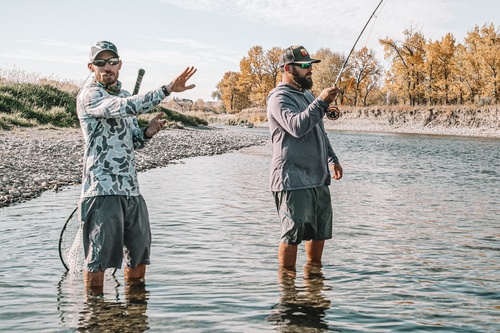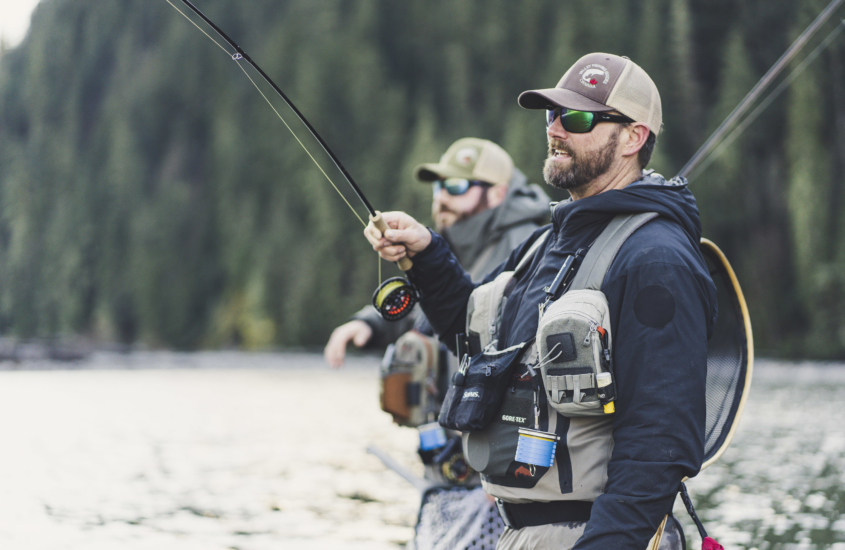From our Targeting Spooky, Educated or Highly Pressured Fish with Josh Nugent Masterclass
Rarely are fly choice, rod selection, and equipment the determining factors between anglers who catch 90% of the fish and those who catch 10%. Instead, the outcome is determined by a fisherman’s patience.
It’s likely you’ve met some of the most patient anglers who are, not surprisingly, also some of the most successful ones. They take their time, never entering the water without first surveying their surroundings. They know the secret: if they hope to catch fish other people have scared off or failed to fool, then they’ll simply need to be more patient. It can be one of the hardest things to master, but the reward is worth the effort.
Personally, even though I may have fished a river a hundred times, one of the first things I do when I get there is walk to the closest bridge and look down. More often than not there appear to be no fish. A few moments later, however, my eyes adjust and I soon realise that there are actually a number fish that I initially missed. It’s incredible the difference a few minutes of silence and concentration makes.
I’ve noticed that, as a rule, I’ve grown to be a more patient fisherman with time. Guiding has been a fantastic way to hone this skill because it requires an eye for subtlety. Personally, I’ve found photography to be an excellent way to dial in such patience and observational abilities. Photography demands patience by waiting for the ideal shot of a fish feeding in their natural environment. While witnessing the fish feed, you learn to assess their behaviour, their patterns, and their habits. It’s the ultimate trout lesson.
In addition to being patient and observant, it helps to know where to look for fish. Fish that are naturally spooky or under a lot of stress will always require a “way out”. A fish laying in shallow water, for example, may seem an easy target, but don’t be disillusioned, they have deep or swift water nearby for a place to retreat if necessary. If you rush into the water and begin casting right away, you’ll probably scare off any nearby fish before your fly has even hit the water. Sound travels fast underwater and alerted fish are much more difficult to catch.
Additionally, keep an eye out for current seams, eddies, and feeding lanes. Fish love a fast-moving current seam because it acts like a conveyor belt, transporting insects and food them as it moves. Fish will also frequently hold near the edge of a current seam where they may quickly cross into a fast current to snatch food and then casually return to the slow current.
In eddies, where foam frequently develops, fish can often be found. It’s the old “foam is home” adage. Fish will frequently cycle beneath foam because bugs get caught in it. There is a considerable likelihood that fish will be present in an eddy with foam if you can present your fly to one.
When pursuing larger, educated fish it’s important to search for areas that are difficult to access or that most anglers overlook. Since angler access is tricky, these are the locations that will hold large fish. Difficult-to-catch, knowledgeable fish can also be found in places like pocket water, tiny seams, or mid-river structure like shelves and rocks. You’ll have a better chance of catching bigger, more intelligent fish if you focus on these regions.
When interacting with stressed or frightened fish, clothing is another factor to take into account. The hues of your apparel can have a significant impact on whether or not you spook fish, as they have a keen eye for colour and can quickly distinguish between bright or contrasting tones.
While complete camouflage is not necessary, it is beneficial to wear colours that fit in with your surroundings. Wear earth tones, for instance, if you’re going fishing in an area with a high mountain backdrop. Blue is an excellent colour to wear when fishing in an area where you’ll be on a high ridge or boat, contrasting against the skyline. Avoid wearing clothing that is vividly coloured, such as red, orange, white, or black, as these hues stand out and are known to readily frighten fish.
As far as approach goes, most anglers know the significance of approaching fish from behind (especially when casting or moving upstream). Approaching fish from the tail rather than the head is a must as fish are most sensitive to movement in their peripheral vision. Furthermore, while approaching a fish in an eddy, try to remember that the fish will be facing the current if the eddy is flowing in the opposite direction of the main flow, thus you must approach from the opposite side.
When approaching a river, it’s crucial to consider the topography and access points. Keep enough distance from the bank so you don’t frighten any nearby fish as you move. If you have no other choice than to move downstream, it is preferable to move away from the riverbank before walking all the way to the run’s bottom and then moving back upstream.
In conclusion, it’s critical to pay attention to the little things that may seem insignificant. Clothing, movement, approach, observation… You’ll have a better chance of catching more fish if you keep these things in mind. To learn more on each of these points, and to see it in motion, check out our Spooky Fish Masterclass here.













